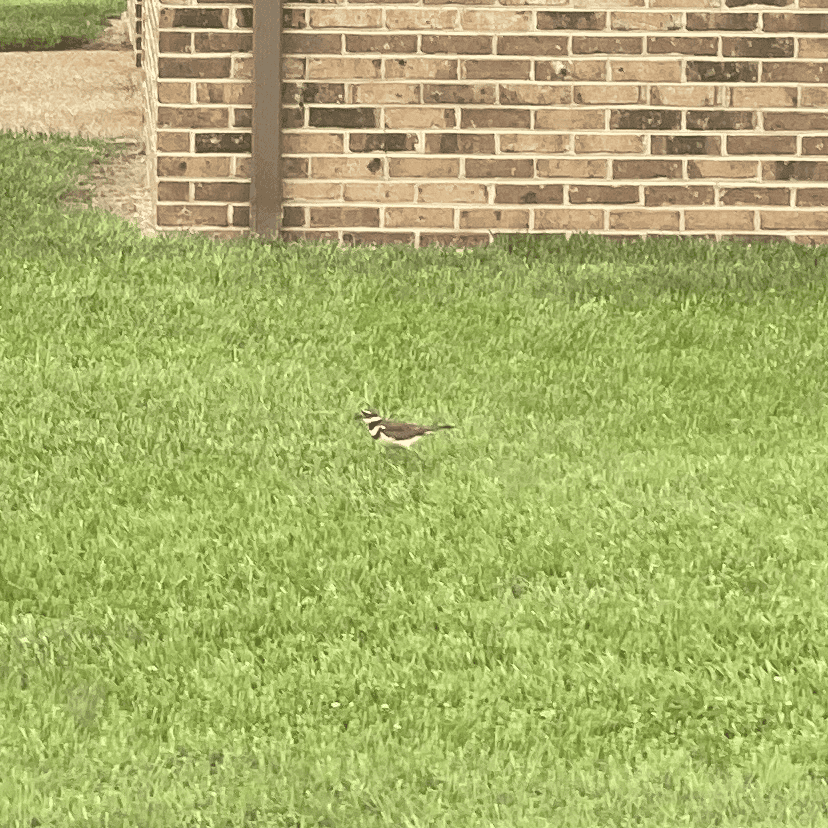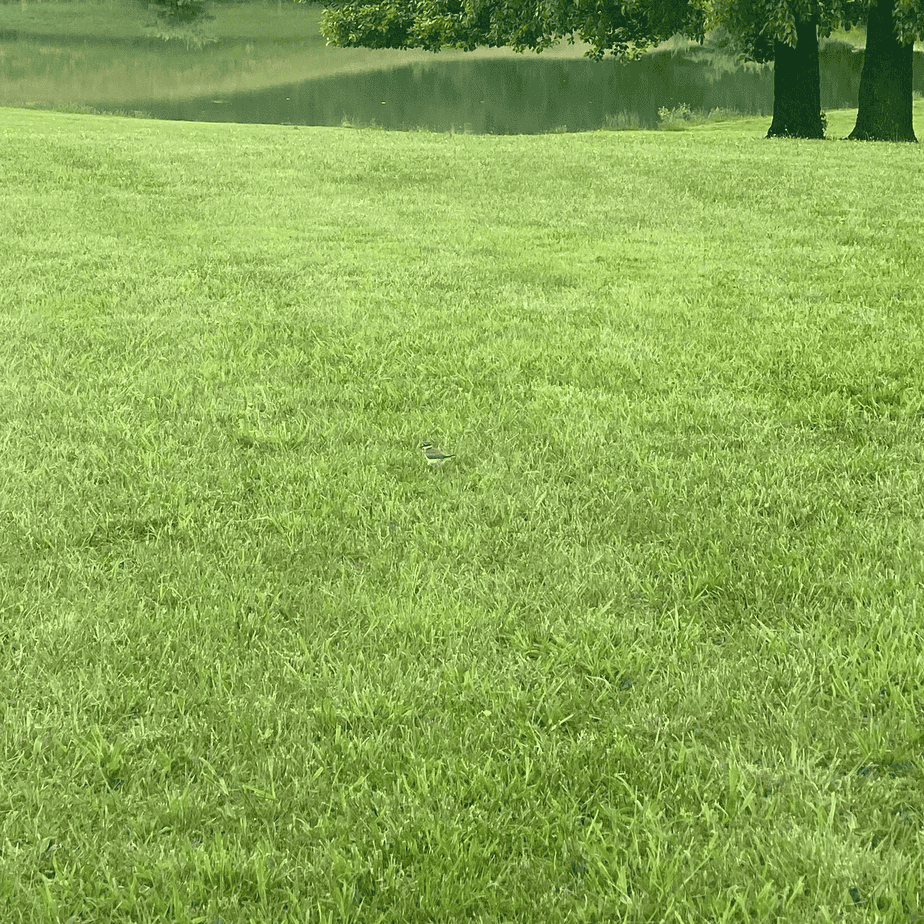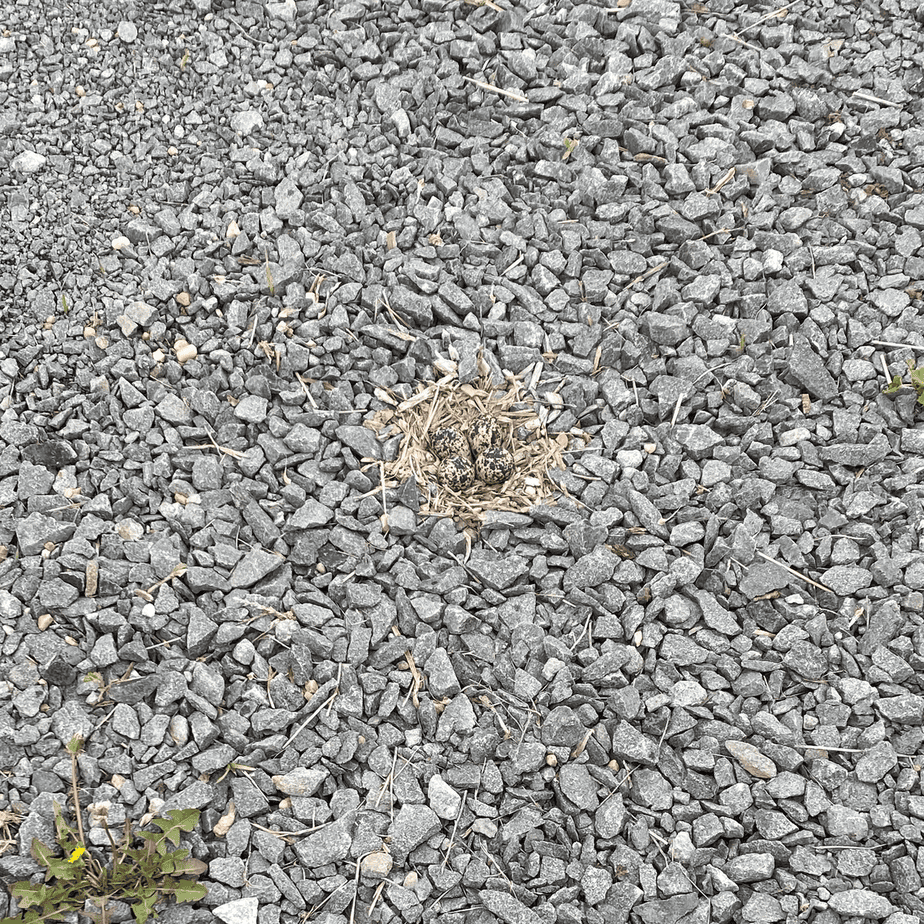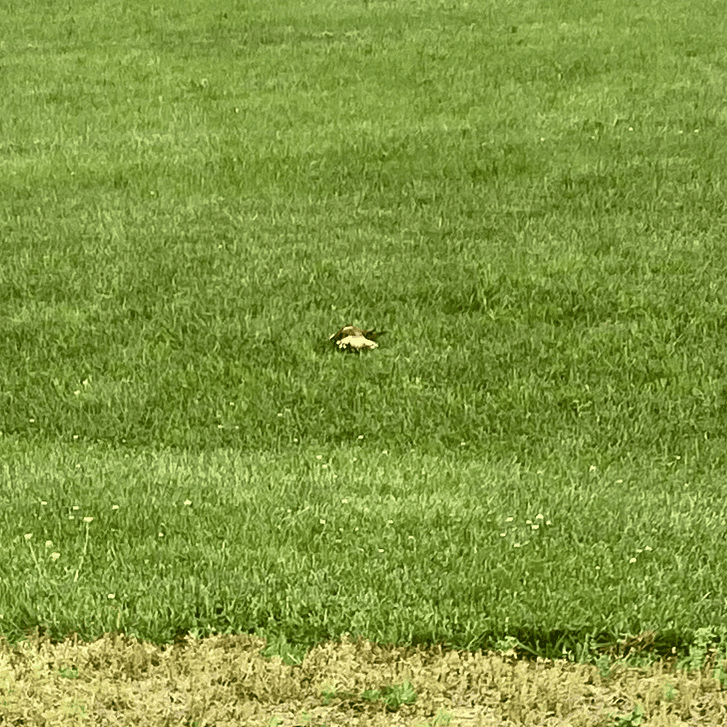Killdeer are small to medium sized birds that are common, but not in suburban areas. They are a type of plover which is a gregarious wading bird who is usually found by water. Even though they are common, they are really interesting. I first saw them last year. It is amazing that these birds successfully nest on the ground. These photos are not good. Links are provided to better photos. Read on to find out more.
Physical Description
Killdeer are muted variations of black, brown, orange, red, and white. The ones that I see are about the size of a large robin; although the Audubon Society says that they can be the size of a crow. Unfortunately, there is a wide range of crow sizes. At first glance, they are mostly brown and white, with horizontal black bands across their chests. They have longish, skinny, legs. These birds do a lot of running on the ground!
Killdeer Habitat
Interestingly, they have a variety of habitats. You can find them in fields, lawns, open ground, riverbanks, pond/lake banks, mudflats, and shores. The ones that I see live in a combination of a gravel driveway/parking lot, fields, and a pond edge. This is a photo of one of their nests on the ground. This area is frequented by lots of small mammals. Unfortunately, these eggs got eaten. Other nests are in the short grass. These seem to be more successful. This leads us to the next section.
Nesting and Raising Their Young
Both parents incubate the eggs and raise the young. The nest usually has 3-5 eggs. Eggs are incubated for 24-28 days. Parents rotate incubating the eggs and monitoring the babies.
These birds are really like something that you would see on National Geographic. They are highly attentive to their young. Killdeer parents use multiple strategies to protect their young. First, the adults will attempt to lead predators away from the babies. Second, the adults will pretend to have a broken wing to deter predators. This terrible photo is one of the parents pretending to have a broken wing. The dog was close by. During this behavior, the orange and red wing feathers are displayed. Last year, the pair I watched only successfully raised one baby. Conversely, this year they are raising 4 babies. It is amazing that they have been so successful. The young are not flying yet, but I think they are close. What a great experience to watch these birds in action.



